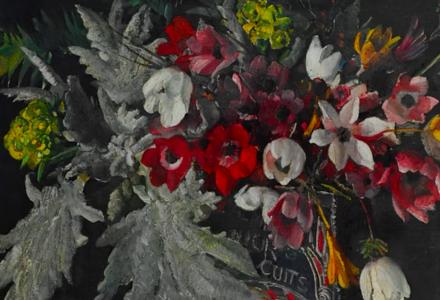Gas was one of the Great War’s greatest horrors. There were seventeen types of gas developed during the Great War. The Allies and the Germans competed for new ways to blind, choke, cripple and kill the enemy. Historians have dubbed this ‘the race to toxicity’.
Mustard gas was first used in July 1917. It drifted in a heavy cloud across No Man’s Land, poisoning everything in its path and settling in the trenches.
Mustard gas blinded men while they fumbled with their masks. It blistered any exposed skin on contact, scarred bronchial tubes and damaged the lining of the lungs.
Most men severely affected by gas seldom recovered. And that of course was the intention. Taking a gassed man out of the line weakened the enemy’s defence, but keeping him alive posed a cost to the state long after his evacuation. The ‘whispering men’, as they were called, haunted the streets of post-war Australia, a pathetic burden on the community and their families. They suffered from breathlessness, dizziness and nausea. Many were hospitalised for many years. Like Samuel Rolfe.
A farmer from Inverell, Trooper Rolfe was badly gassed near Albert in France, discharged ‘medically unfit’ and sent home. They called him ‘the man in the bath’. Mustard gas had blistered much of his skin and there was ‘a scaly feeling all over his body and face.’ Any treatment in such a case was likely to be palliative. Immersion in a tub of special fluid numbed his pain just a little.
For almost four years Samuel Rolfe lived in a bath of boric acid. A screen was drawn around his tub in the Prince of Wales hospital. Visitors—and there were never many—spoke to Rolfe though a screen, never seeing his eyes, never touching his body. It was a kind of liquid prison.
‘The Man in the Bath’ died of war-related causes just a week shy of Christmas 1924. And gas would go on killing men decades after the fighting had ended. Over 1.3 million men were casualties of gas attacks during the Great War.
Rolfe’s story reminds us of the fate of the Great War’s survivors. Many faced slow and lingering deaths, many were confined in institutions, and denied the comfort of friends and family. In Rolfe’s case, confinement to a bath mirrored the claustrophobic imprisonment of the trenches, continuing the horrors of war well into peacetime.
For full attribution of sources, suggestions for further reading and an extended version of the story itself see ‘The man in the bath: Samuel Rolfe’ in Bruce Scates, Rebecca Wheatley and Laura James, World War One: A History in 100 Stories (Melbourne, Penguin/Viking, 2015) pp. 245-247; 361.



